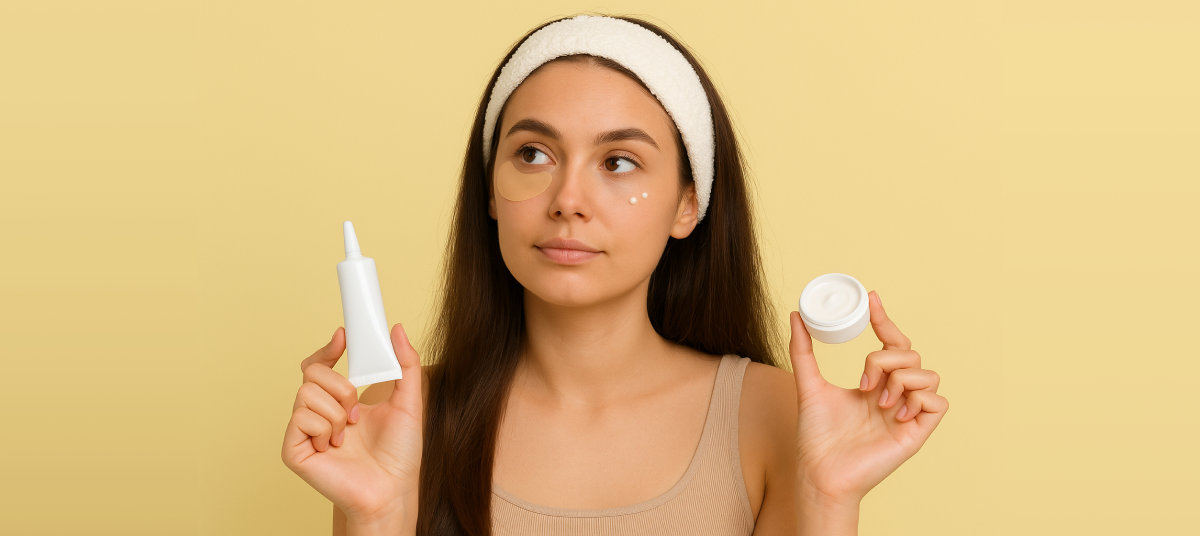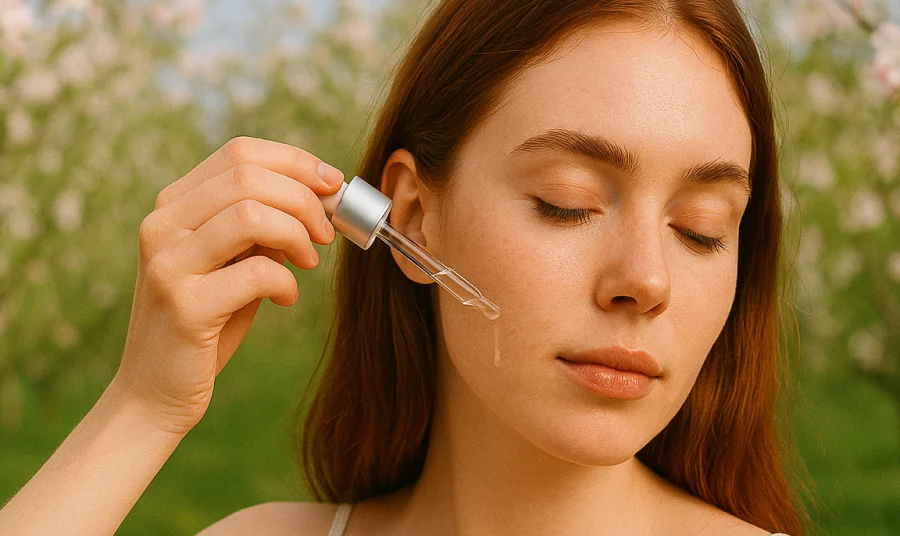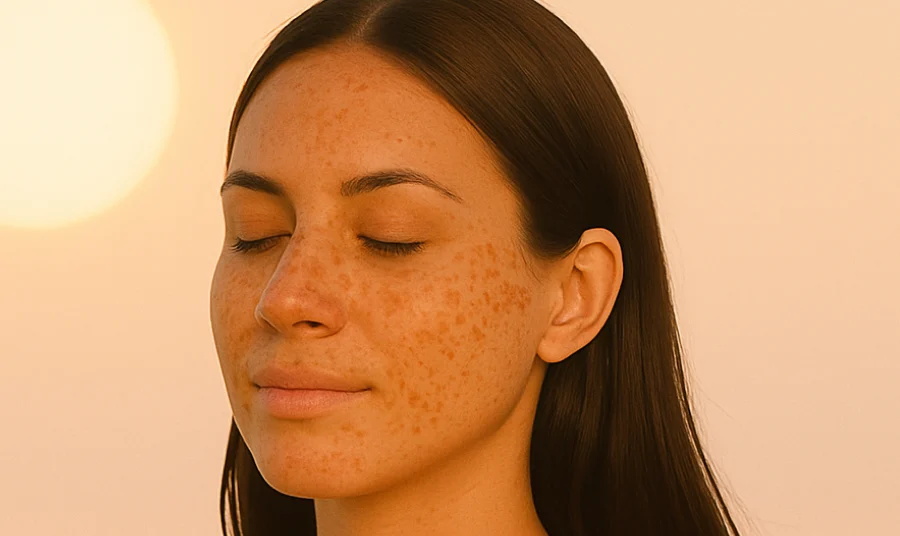Can you just use your regular face cream around your eyes?

Eye Cream: Skincare Essential or Just Clever Marketing?
The skin around your eyes is thinner, more delicate, and quicker to show signs of stress, fatigue, or incorrect skincare. That’s why beauty brands have long treated this area as a category of its own — offering dedicated eye creams, gels, and patches. But it raises a valid question:
Do you really need a separate product for your eye area, or is this just a marketing ploy?
Can’t you just apply your usual face cream and call it a day?
Let’s break it down.
1. Texture matters
Face creams are typically richer, thicker, and slower to absorb. While that’s fine for areas like your cheeks or forehead, the fragile eye area doesn’t handle such heaviness well. A dense texture can lead to puffiness, irritation, or even milia — those tiny white bumps under the skin.
Eye creams, on the other hand, are designed to be ultra-light and fast-absorbing, so they don’t overload this sensitive zone.
2. Same ingredients ≠ same formulation
Sure, both face and eye products may contain similar actives like hyaluronic acid, peptides, or niacinamide. But the key difference lies in how much and how they’re formulated. Eye-area products are crafted with lower concentrations, tailored for sensitive skin, and often ophthalmologist-tested.
What works beautifully on your cheeks could be way too harsh under your eyes.
3. The skin structure is completely different
In the eye area:
- the dermis is much thinner,
- there are fewer oil glands (meaning less natural protection),
- and there’s constant muscle movement.
Add frequent rubbing (from makeup removal, allergies, or just habits), and you’ve got a region that needs targeted care, not one-size-fits-all solutions.
4. Higher risk of irritation and puffiness
Apply your regular face cream too close to your lash line, and it might migrate into your eyes — leading to stinging, watering, or even allergic reactions, especially if it contains fragrance, acids, or heavy oils.
5. Anatomy + gravity = go gentle
Because of how the under-eye area is structured, fluid tends to collect there — which is why puffiness is so common. Heavy or poorly matched creams can make it worse. Eye-specific formulas are typically designed to avoid ingredients that promote fluid retention and instead help minimize swelling and discomfort.
So… is eye cream necessary?
Your face cream might be fantastic — but likely not the best choice for the eye area. This delicate zone has its own rules, and treating it with a specialized product isn’t about falling for marketing hype. It’s about understanding your skin’s needs.
If you want to avoid puffiness, irritation, and other unwelcome side effects, investing in a well-formulated eye product could make all the difference.



Leave a Comment